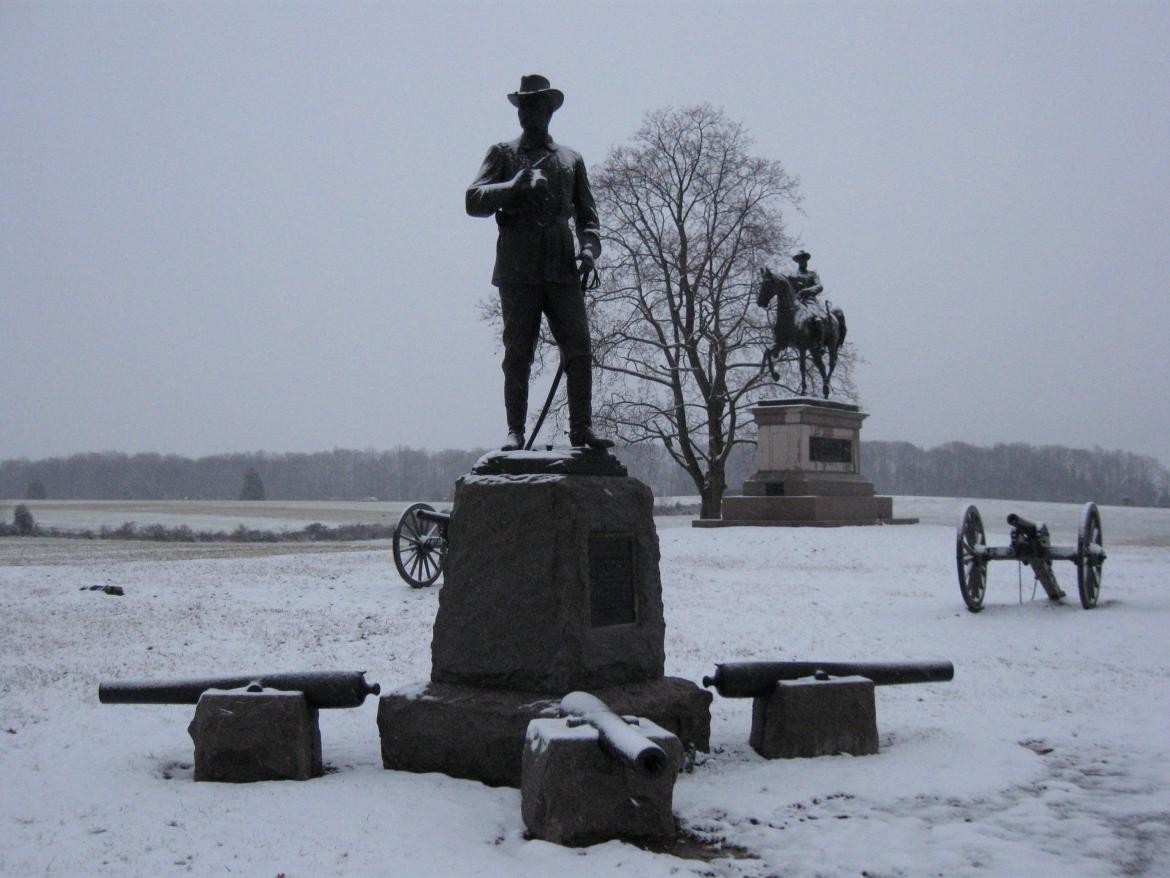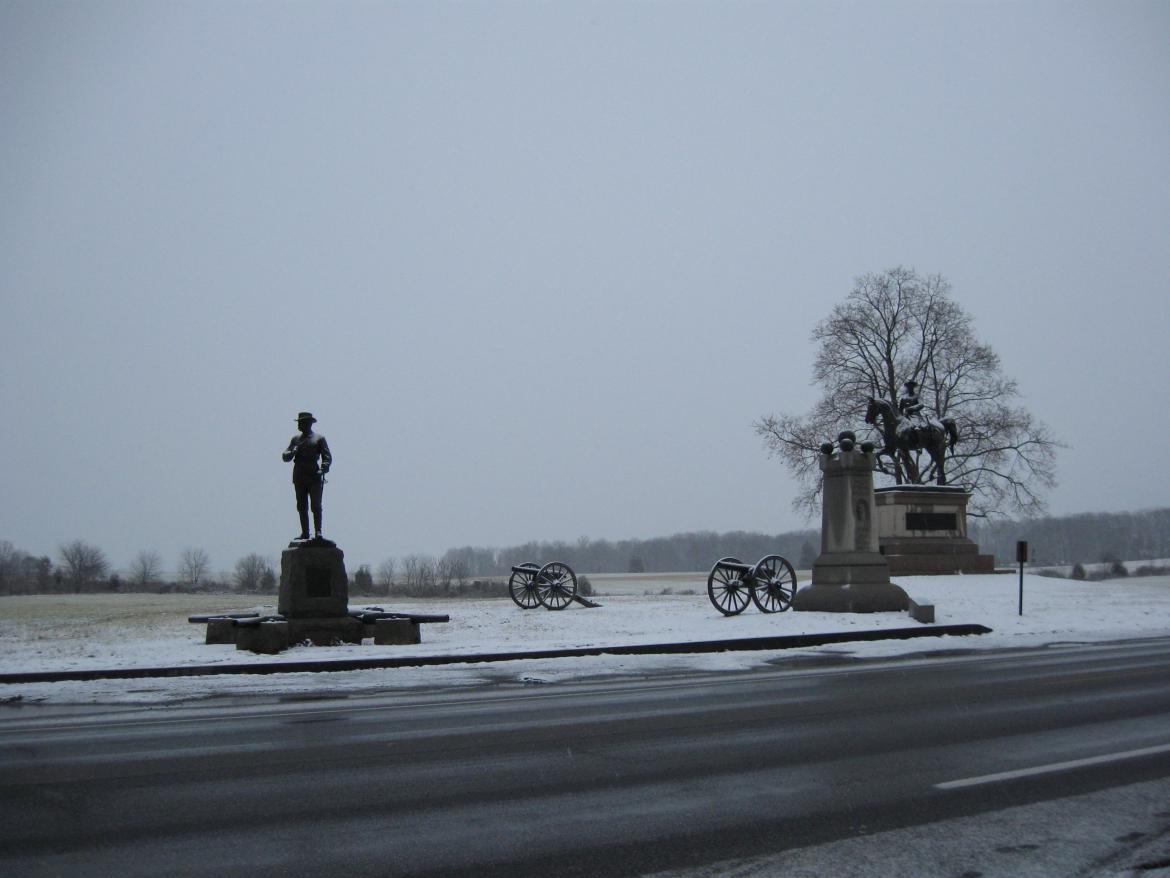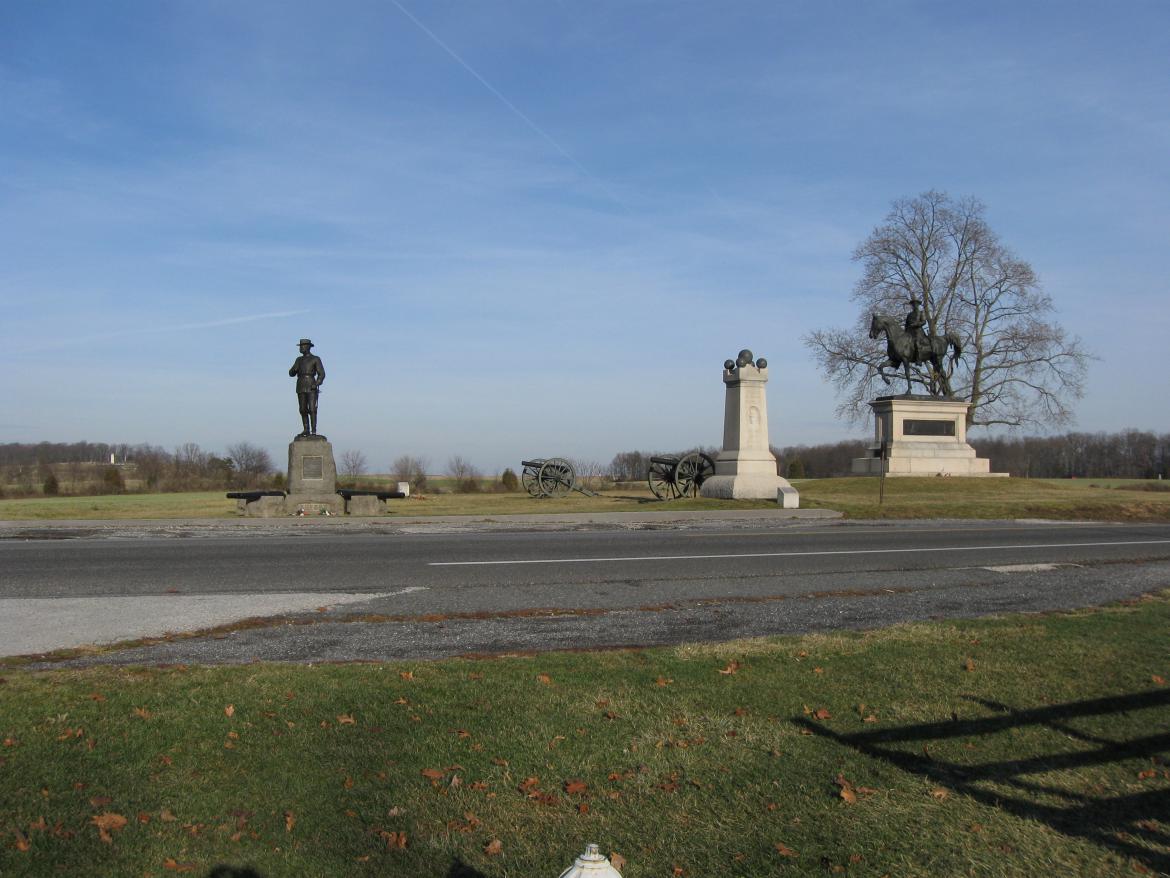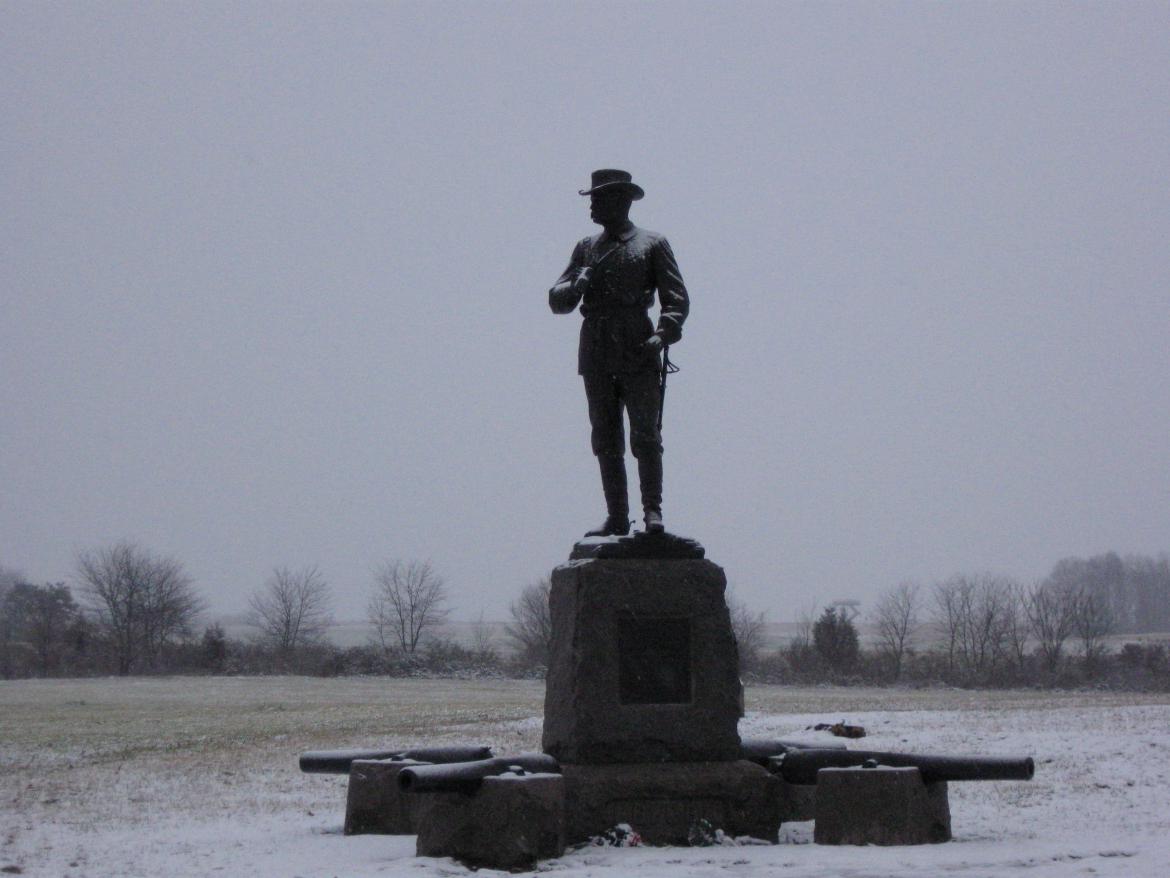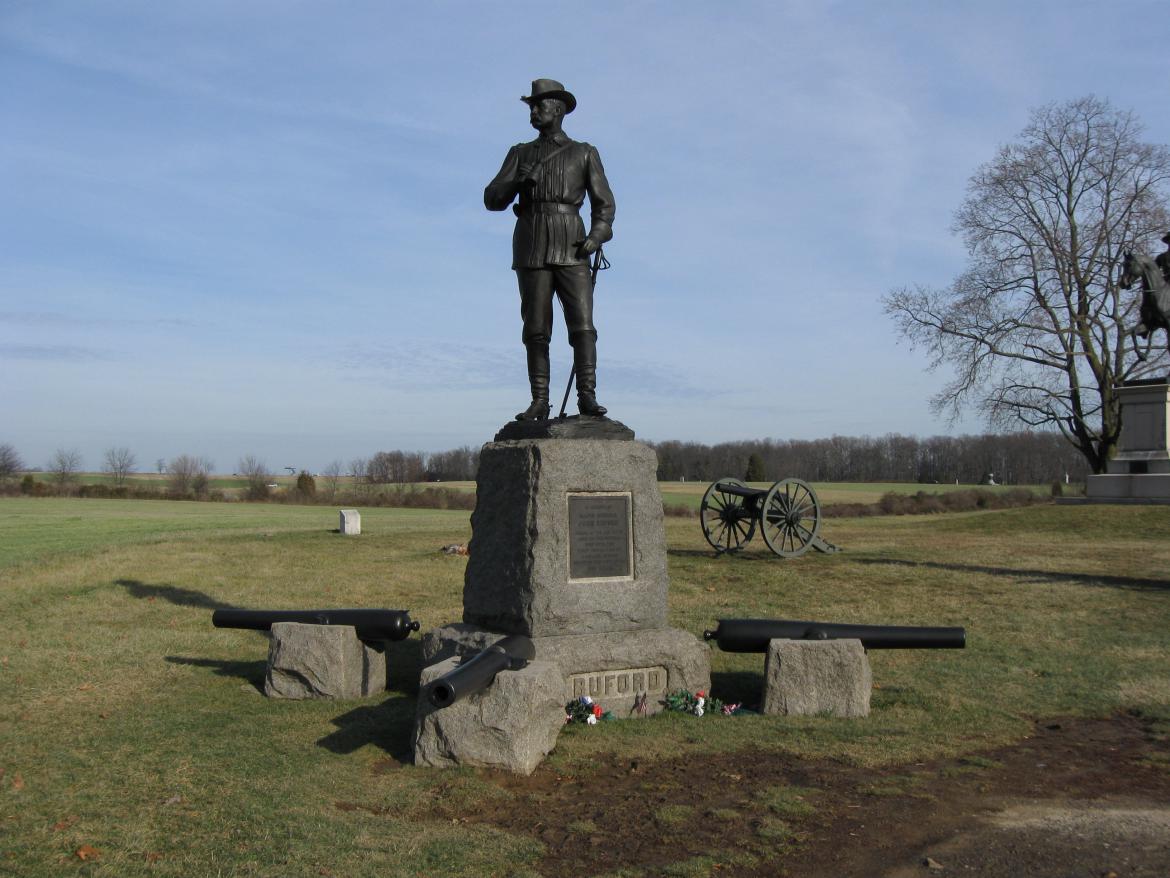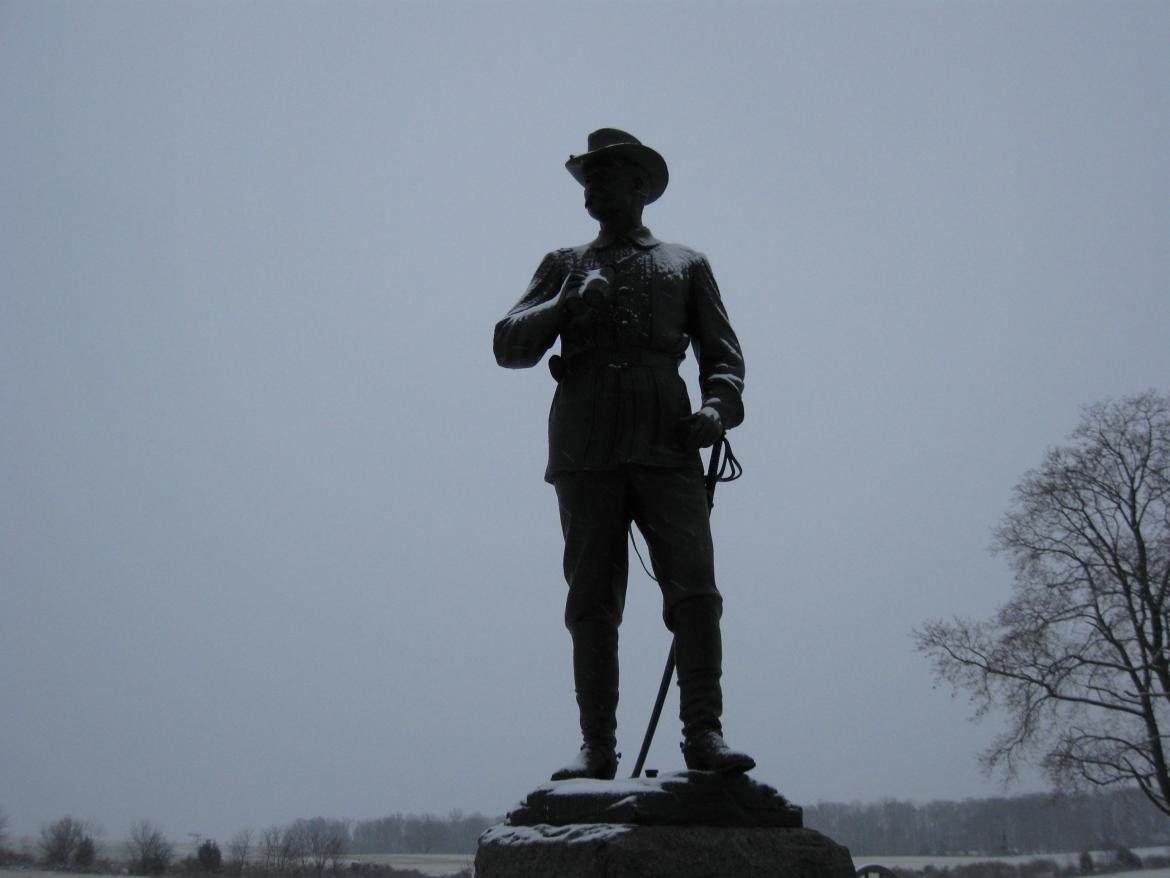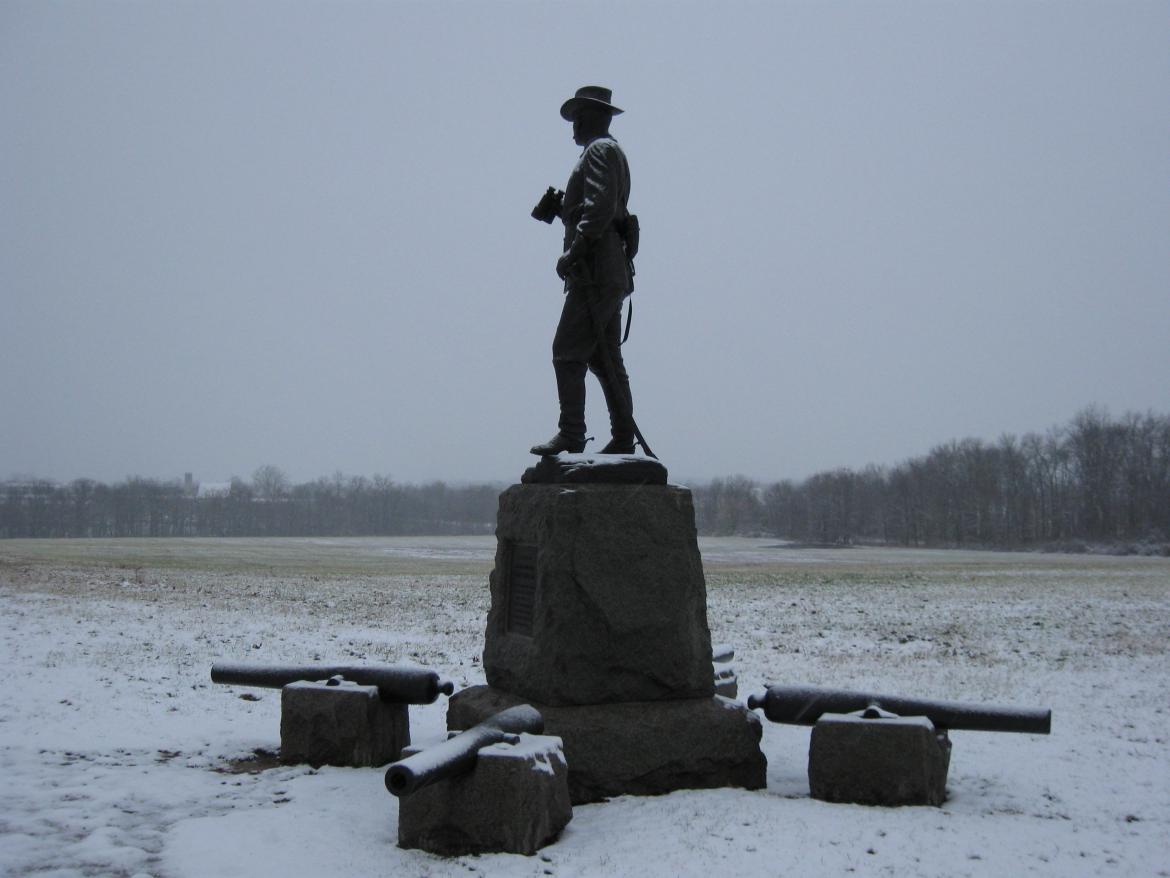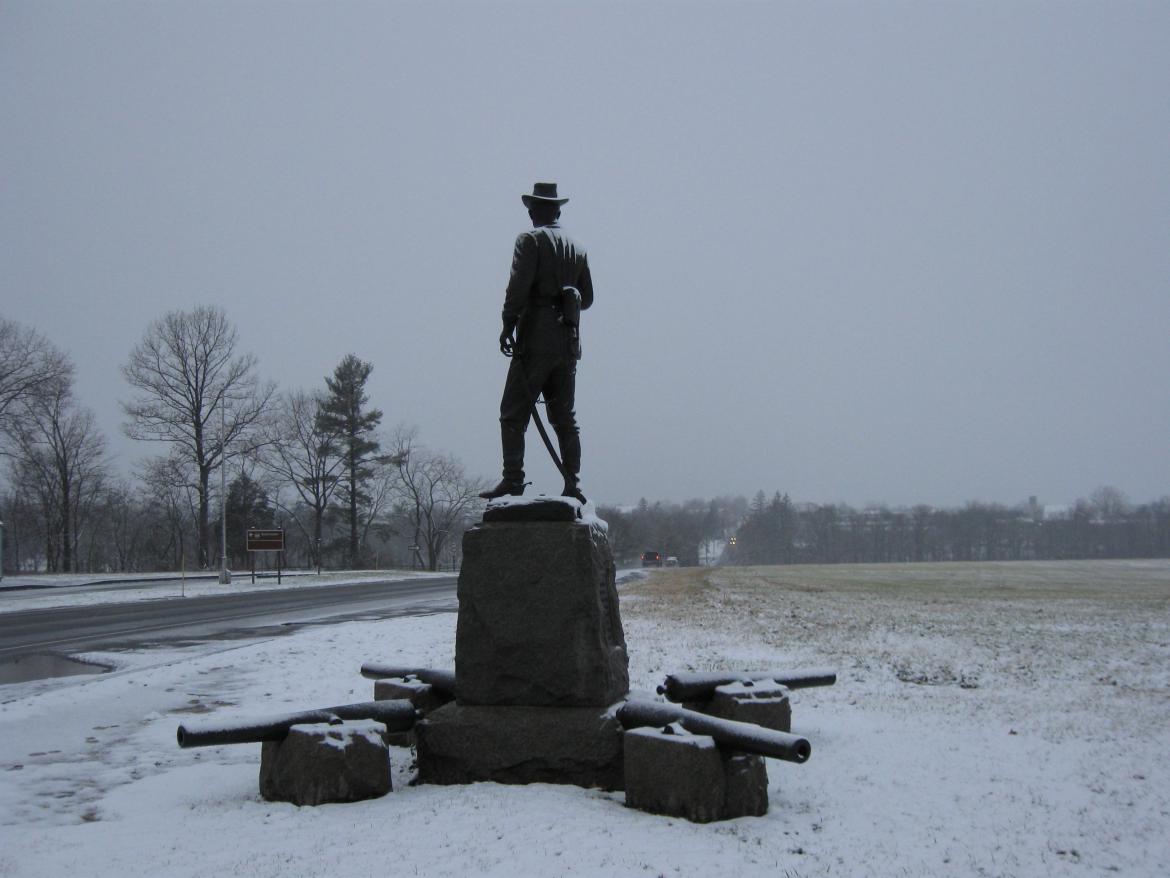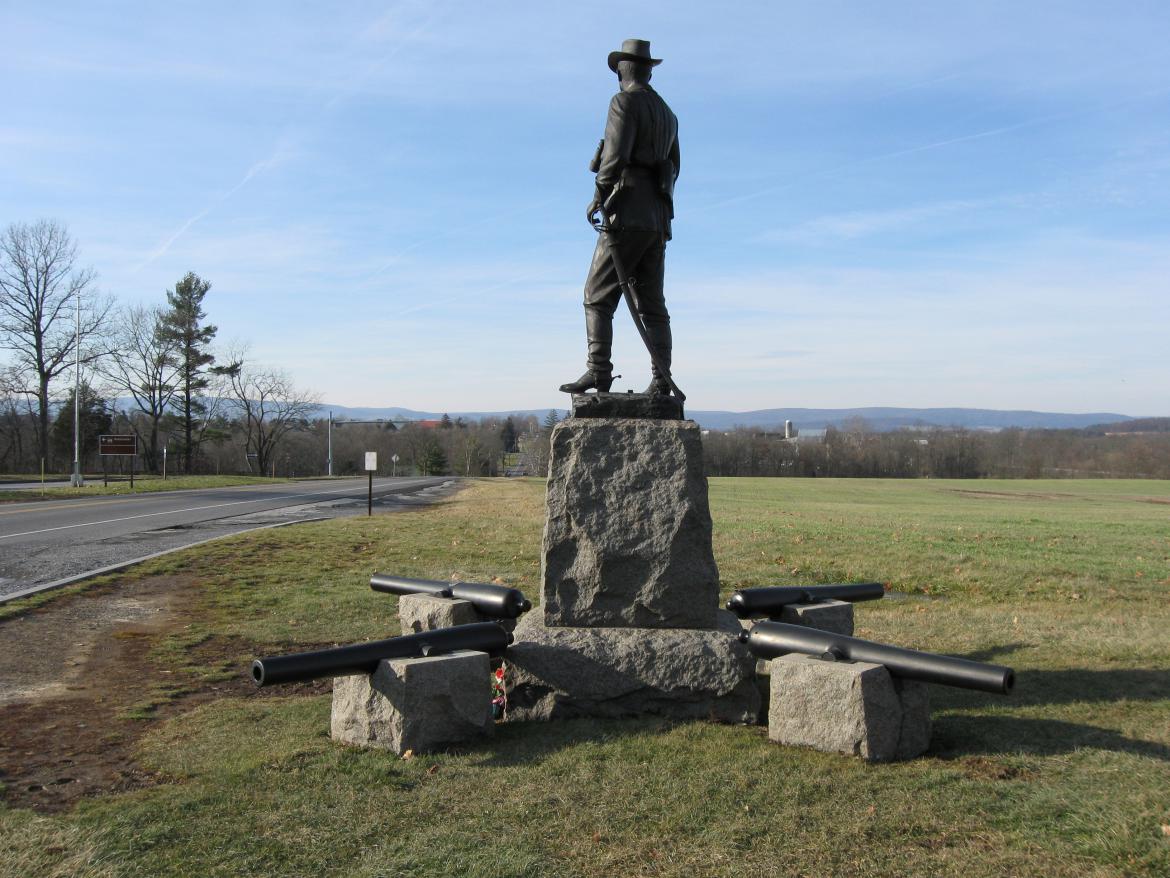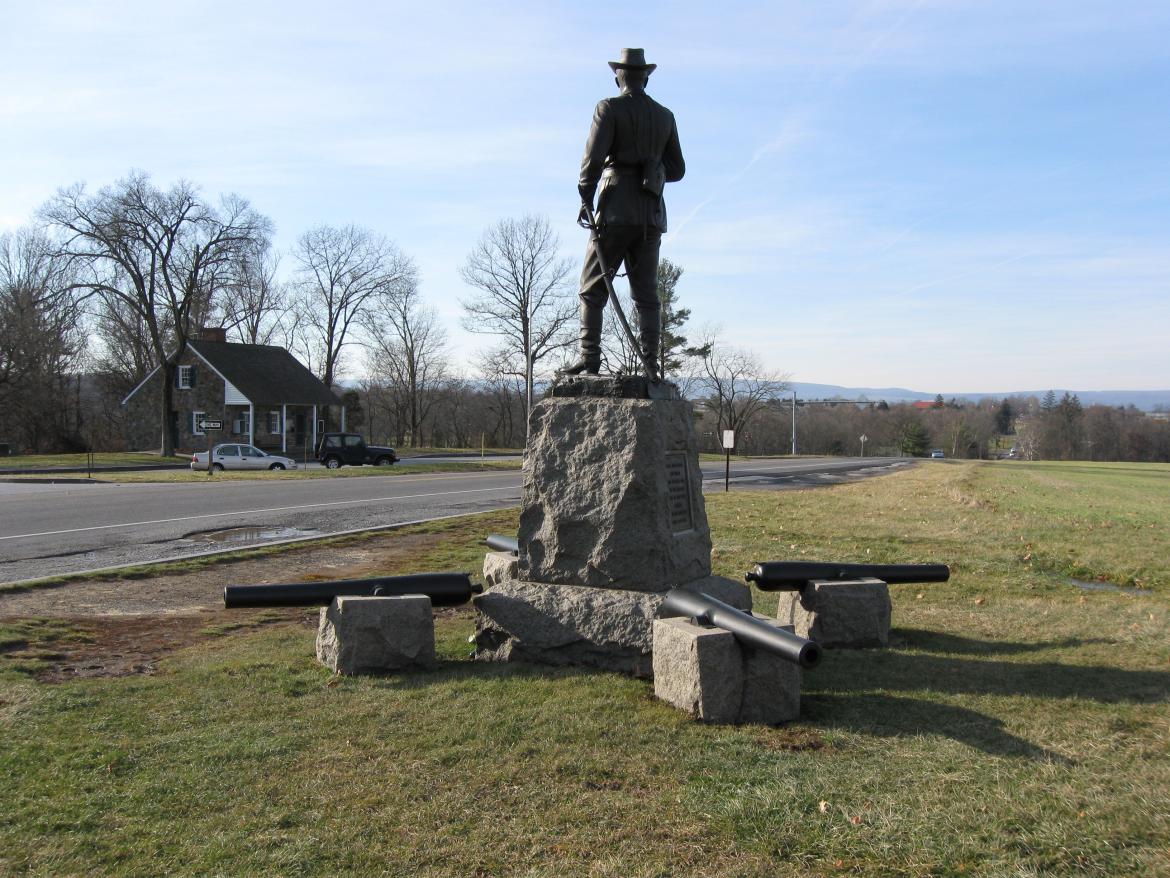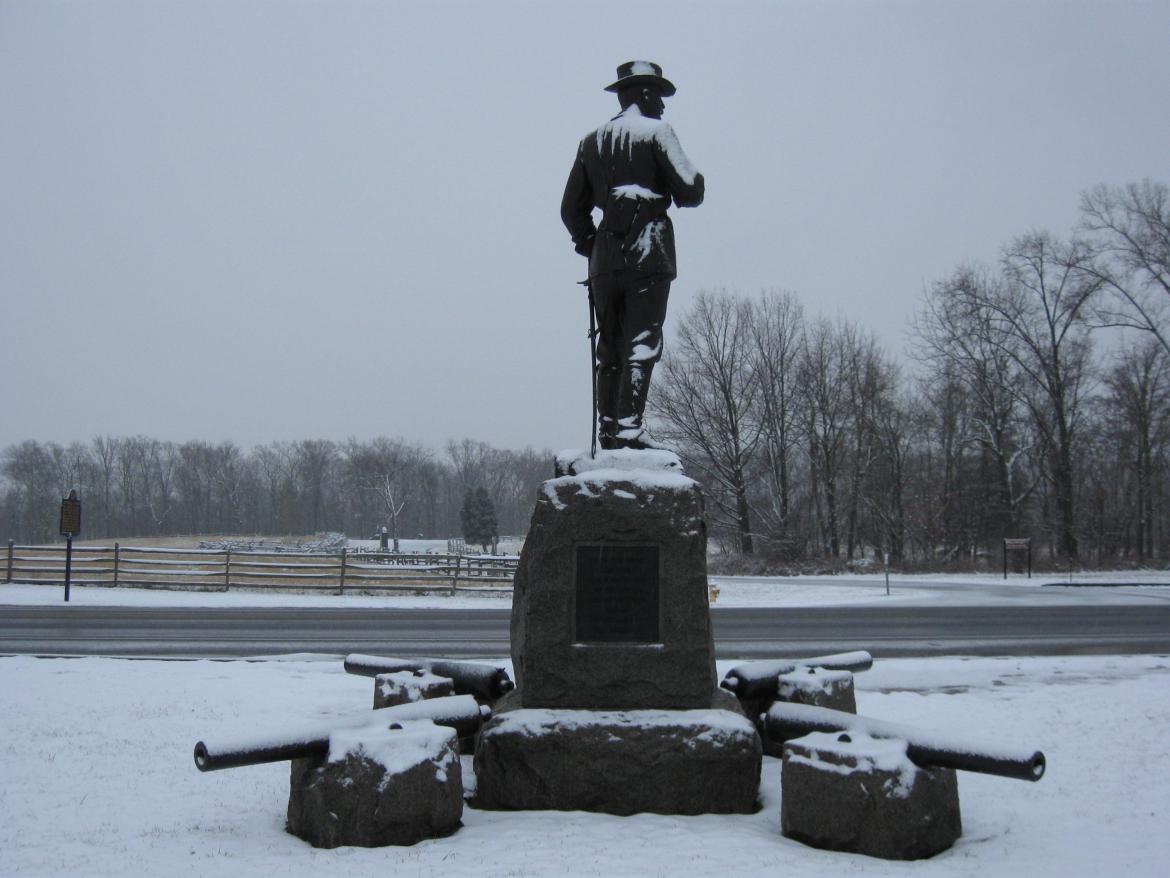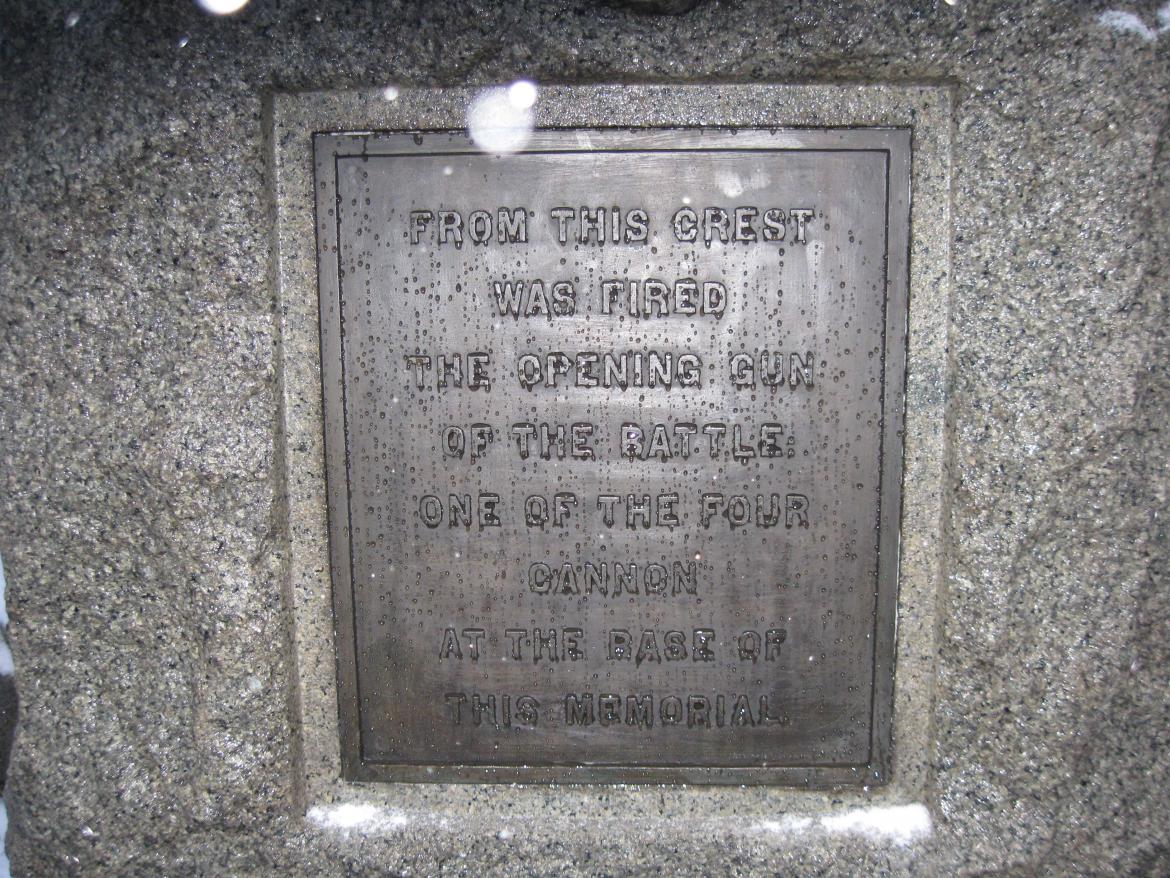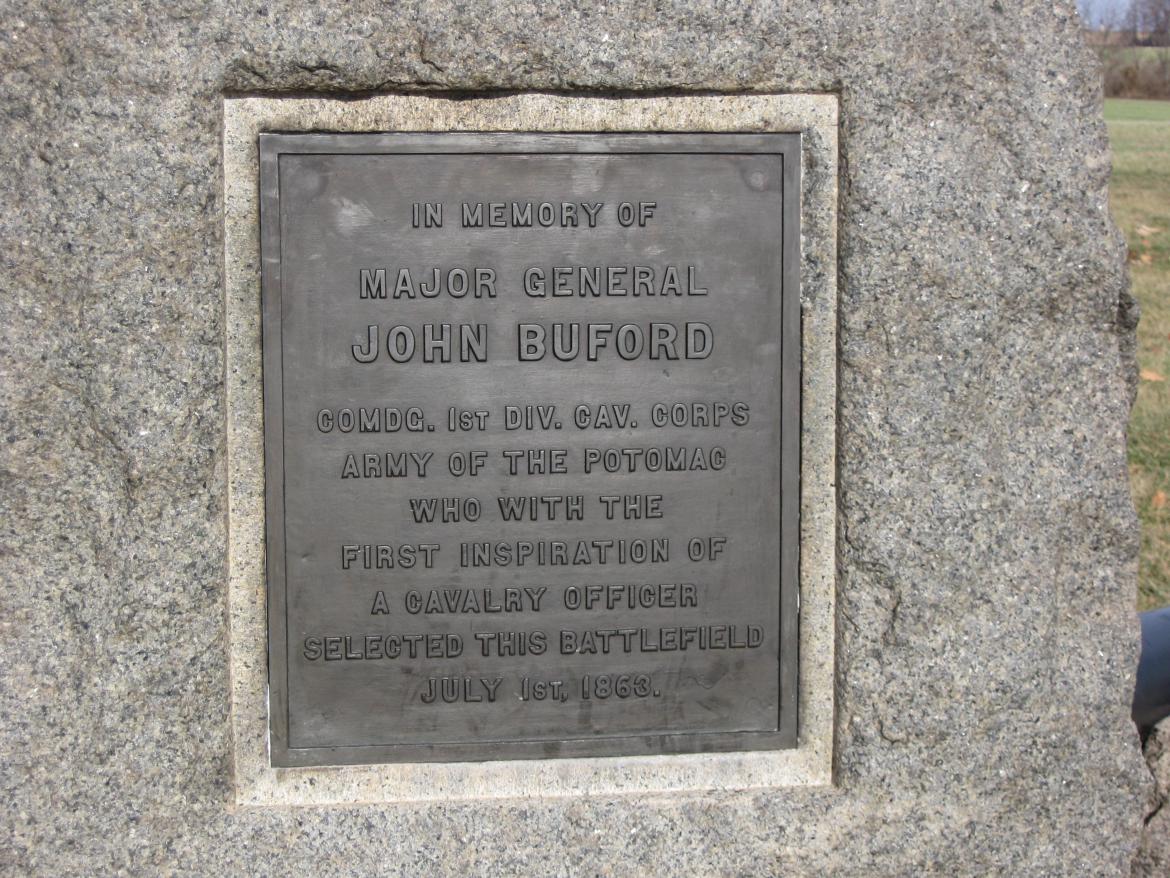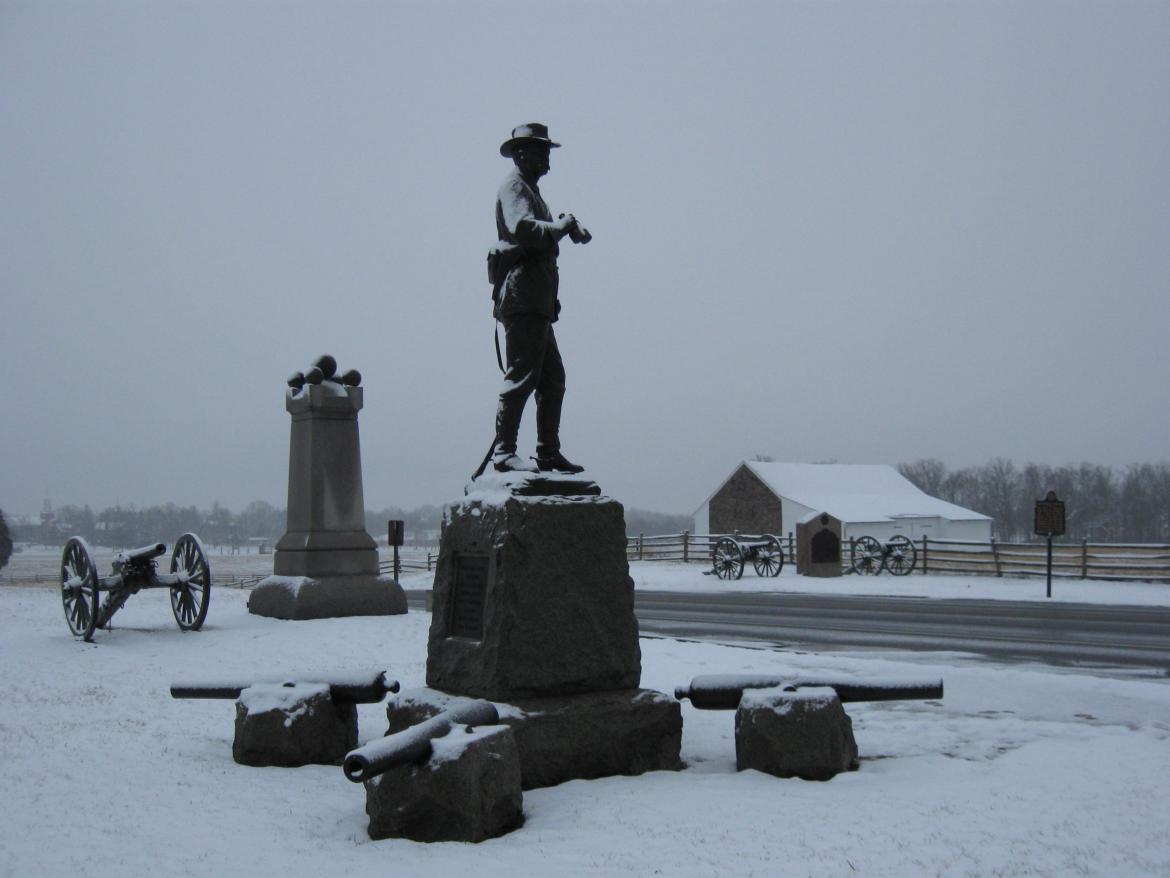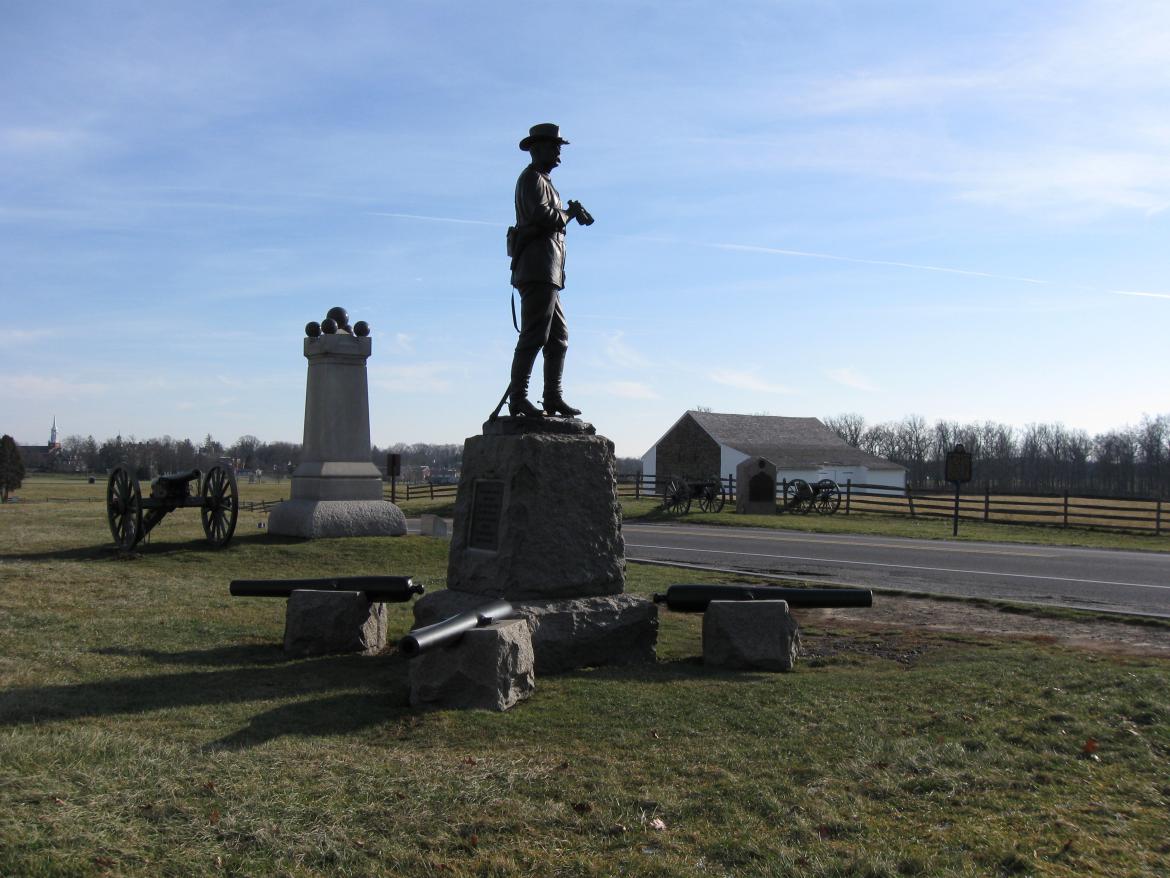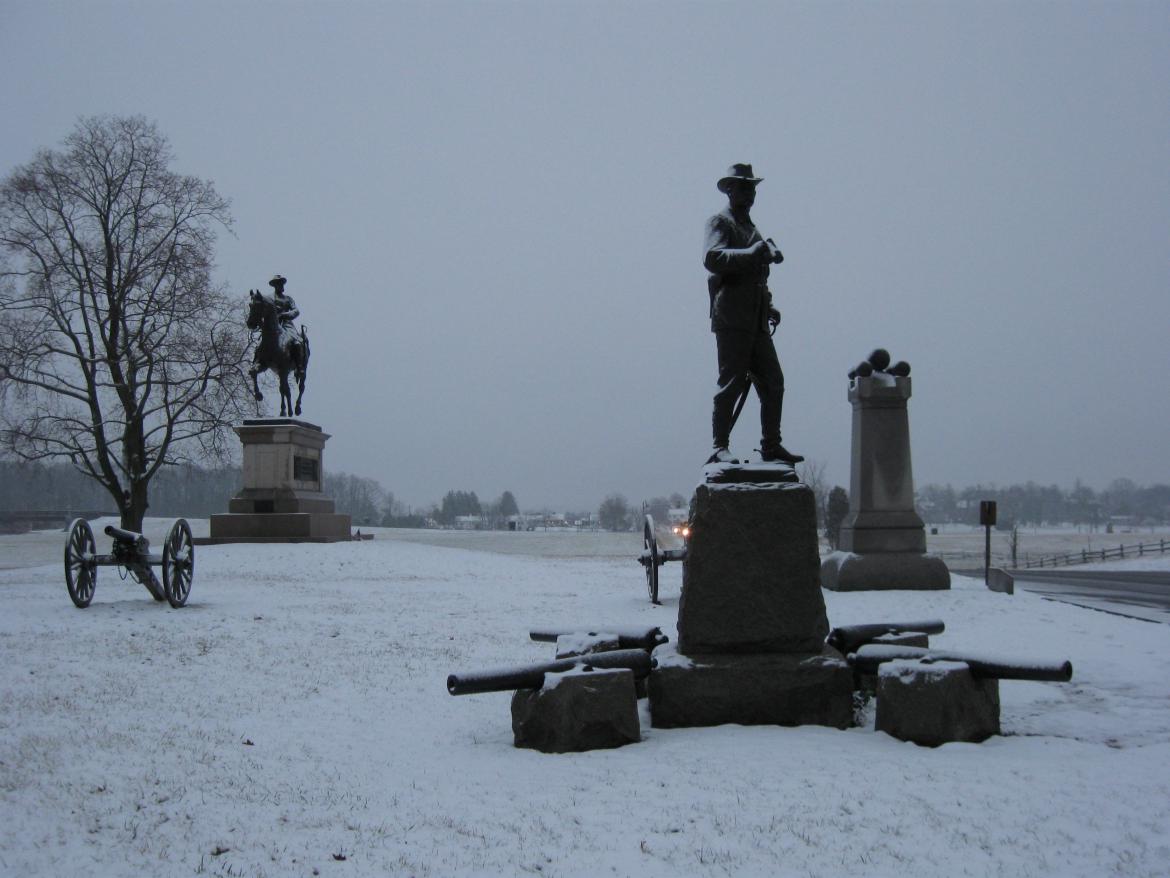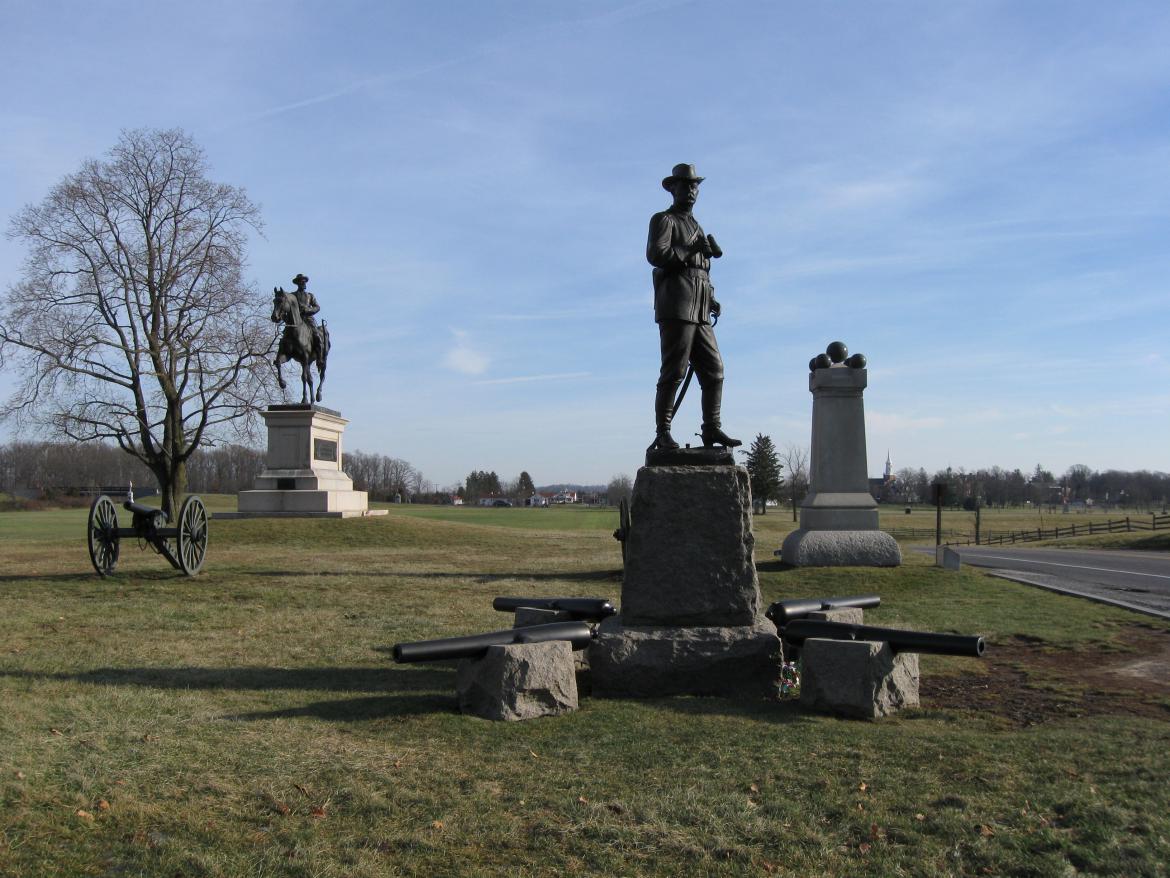The John Buford statue on the western arm of McPherson’s Ridge on a snowy Tuesday afternoon. The equestrian statue to Major-General John Reynolds is in the background. This view was taken facing northeast at approximately 4:30 PM on Tuesday, December 16, 2008.
United States Major-General John Buford is best known for his defense of Herr’s Ridge and McPherson’s Ridge on July 1, 1863. As a division commander and Brigadier-General, his delaying tactics helped other units of the Army of the Potomac to arrive at Gettysburg and eventually form on the ground at Cemetery Hill, Culp’s Hill, and Cemetery Ridge. Less than six months later, however, Buford was dead. Exhausted from overwork, his body was unable to fight off what was believed to be Typhoid Fever. He died on December 16, 1863 in Washington, D.C. at the home of George Stoneman, a former commander. Buford received a deathbed promotion to Major-General, dating to July 1, 1863.
Buford became very tired during the Rappahannock Campaign and by the beginning of November, 1863 was having difficulty moving in his field headquarters. It was thought at first that he had “rheumatism.” This view was taken facing northeast at approximately 3:00 PM on Sunday, December 14, 2008.
It is now believed that Buford was suffering from typhoid fever, a bacterial infection sometimes exposed through contaminated water. The monument to Hall’s 2nd Maine Battery is between the Buford and the Reynolds statues. This view was taken facing north at approximately 4:30 PM on Tuesday, December 16, 2008.
Buford, accompanied by his free black servant, Edward, was transferred to Washington, D.C. However, his wife was visiting family in Illinois, and at first Buford did not have a place to stay. This view was taken facing north at approximately 3:00 PM on Sunday, December 14, 2008.
His former cavalry commander, George Stoneman, opened up his home on Pennsylvania Avenue to Buford. Stoneman had been commanding the Cavalry Bureau in Washington since July, 1863. This view was taken facing north at approximately 4:30 PM on Tuesday, December 16, 2008.
For a brief time, it appeared that Buford was recovering while under the care of Stoneman and an army surgeon, but the strain of the previous campaigns lowered his resistance to infection. This view was taken facing northeast at approximately 3:00 PM on Sunday, December 14, 2008.
Buford’s temperature reached 104 degrees, dysentery and other complications further weakened his body and he became delirious. This view was taken facing northeast at approximately 4:30 PM on Tuesday, December 14, 2008.
When Buford was feeling better, he happily, if somewhat feebly, received members of his command for short visits. This view was taken facing northeast at approximately 3:00 PM on Sunday, December 14, 2008.
Demand for Buford’s services helped to rally him. Following the Chickamauga Campaign, the commander of the Army of the Cumberland, William Rosecrans, requested that Buford be transferred to Chattanooga to command the Army of the Cumberland’s Cavalry Corps. However, Rosecrans was replaced by the greatest of all Civil War Generals, George H. Thomas, soon after making the request, and nothing more was said about it during the Battles for Chattanooga. This view was taken facing northwest at approximately 4:30 PM on Tuesday, December 16, 2008.
After the Chattanooga battles, William T. Sherman was in command of the western armies, and he asked that Buford be sent to him to take charge of the cavalry in the west. Buford was anxious to do so, provided he could bring some of his command from the east. This view was taken facing northwest at approximately 3:00 PM on Sunday, December 14, 2008.
Just before the middle of December, Buford’s health began to fail rapidly, and the news drew some of his friends to the Stoneman home. His wife left Rock Island, Illinois for Washington. This view was taken facing west at approximately 3:00 PM on Sunday, December 14, 2008.
Major Myles Keogh, who as a Captain served on Buford’s staff during the Gettysburg Campaign, stayed by his side. Keogh would be killed in 1876 at the Battle of the Little Big Horn. This view was taken facing west at approximately 3:00 PM on Sunday, December 14, 2008.
The wheels were now in motion to have Buford promoted to Major-General. President Abraham Lincoln needed to persuade his Secretary of War, Edwin Stanton, to make the promotion. The West End Guide Station is in the left background. This view was taken facing southwest at approximately 4:30 PM on Tuesday, December 16, 2008.
Stanton disliked deathbed promotions, and he was not comfortable promoting United States officers that had been born in the South. Supposedly, when Stanton was assured that the Kentucky-born Buford would not live to act on his promotion, Stanton made the appointment. This view was taken facing southwest at approximately 3:00 PM on Sunday, December 14, 2008.
Early on December 16, 1863, Buford’s appointment to the rank of Major-General arrived from the White House. His rank was effective from July 1, 1863, the day he made his stand on these ridges near Gettysburg. This view was taken facing south at approximately 4:30 PM on Tuesday, December 16, 2008.
Here is the plaque on the north side of the Buford Monument. The white blotches are snow. This view was taken facing south at approximately 4:30 PM on Tuesday, December 16, 2008.
Upon learning of his appointment to Major-General, one source has Buford whispering, “I wish I could have lived now.” One of his aides signed Buford’s name on the form to accept the commission. Another aide served as a witness to Buford’s acceptance. This view was taken facing southeast at approximately 4:30 PM on Tuesday, December 16, 2008.
The plaque on the south side of the monument. This view was taken facing southeast at approximately 3:00 PM on Sunday, December 14, 2008.
The rest of December 16th, Buford floated back and forth between consciousness and a delirious state. At one time he became upset with his teary-eyed servant, Edward, for a minor mistake, but later apologized. This view was taken facing southeast at approximately 4:30 PM on Tuesday, December 16, 2008.
In his delirium, his last intelligible words were orders to his officers to patrol the roads and to stop fugitives from the front lines. John Buford was 37 years old. This view was taken facing southeast at approximately 3:00 PM on Sunday, December 14, 2008.
Major-General John Buford’s life ended late in the afternoon of December 16, 2008. His funeral was held at the Presbyterian Church at Thirteenth and H Streets. Those attending the funeral included President Lincoln, Chief of Staff Henry Halleck, and Secretary of War Stanton. This view was taken facing east at approximately 4:30 PM on Tuesday, December 16, 2008.
Myles Keogh was one of the individuals who accompanied Buford’s body on a train to his final resting place at the United States Military Academy Post Cemetery at West Point, New York. Buford graduated from West Point in 1848. This view was taken facing east at approximately 3:00 PM on Sunday, December 14, 2008.

